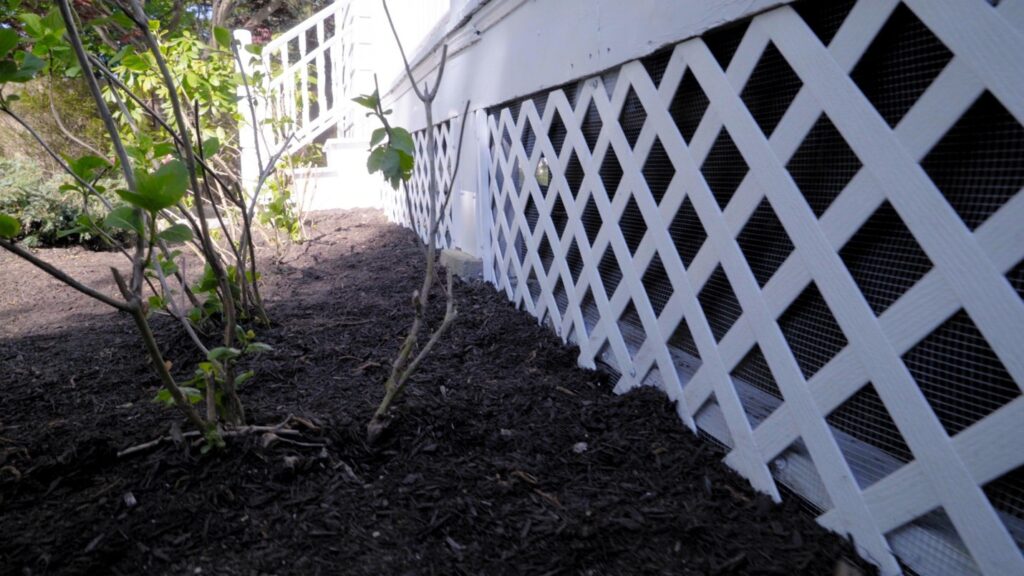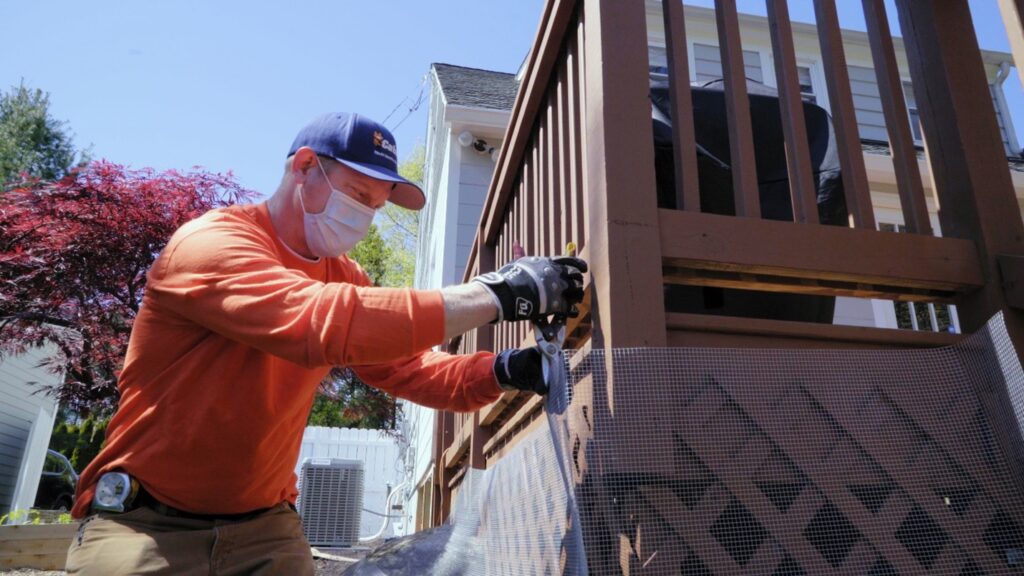How to Prevent Groundhogs from Burrowing Under Sheds
Learn How to Get Rid of Groundhogs That Dig Holes in Your Yard, Under Decks, Sheds & Other Structures
Spring has officially sprung, and the warm weather also means plenty of nuisance wildlife — especially groundhogs — will be making an appearance.
Depending on the region, this critter may be referred to as a groundhog, gopher, or woodchuck. Regardless of the name used for this critter, property owners can all agree on one thing — groundhogs can be incredibly troublesome and must be stopped before causing extensive property damage.
Stop Groundhogs from Digging Holes in Your Yard & Under Your Shed
A group of groundhogs — known as a coterie, can be harmful to the foundation and wiring found throughout a property. Their teeth never stop growing, and the critter’s appetite is insatiable.
However, the most problematic habit of groundhogs is how much they dig. Pest control specialists refer to the burrowers as underground architects, as groundhog tunnels can reach up to 25 feet long and 50 feet deep.
These dimensions can be a true nightmare for any property owner.
The layouts of their burrows are complex, featuring multiple chambers and entrances. Groundhog holes at the surface generally reach up to 12 inches in diameter. It is not uncommon to find as many as six separate holes leading to a single tunneling system.
When burrows are constructed near or under a structure — such as a house or shed, it can lead to devastating consequences. The amount of dirt excavated to create a series of burrows can undermine or erode the structure’s foundation.
This problem is made even worse when groundhog tunnels fill with water.
Groundhogs hibernate from October to March, so as the month of April approaches, the nuisance wildlife will become more active.
Property owners must prepare for the inevitable to ensure their shed, home, or office remains protected against the burrowing critters by referring to professionals in the pest and nuisance wildlife industry.
Safe & Responsible Methods to Discourage Groundhogs from Digging
Homeowners, property managers, and business owners are encouraged to shield their residences or buildings from groundhogs. But they should also exercise caution and understand when it is best to enlist the help of professionals.
Professional nuisance wildlife and pest control experts have the tools and training needed to handle any degree of infestation correctly and — most importantly — safely.
Those without the appropriate training or equipment needed to properly handle a coterie of groundhogs should not attempt to use dangerous chemicals or relocate the burrowers.
By doing so, it could put themselves and others at risk in addition to additional property damage.
Instead, untrained individuals are encouraged to use methods that can prevent or hinder the problem from growing — inhibiting progress of the infestation while waiting for pest experts to arrive.
Manmade Barriers to Prevent Groundhogs Under Sheds
Even if groundhogs have already started to burrow on your property, establishing sturdy barriers around the perimeter can help prevent the situation from worsening.

Consider installing an underground fence that is at least six inches to a foot deep and at least a foot long that is made of hardy, rust-resistant materials like galvanized wire or hardware cloth that groundhogs can’t easily gnaw through.
Groundhogs are skilled climbers, so a barrier that is two feet high, positioned at a 45-degree angle would make the fencing more difficult to scale.
Catseye Pest Control uses Cat-Guard Exclusion Systems — custom-made barriers, to exclude a variety of pests and nuisance wildlife, including groundhogs.

As a lasting solution to a number of pest and nuisance wildlife problems, Cat-Guard covers points of entry such as gable vents, foundations, basement doors, under corner posts, and more.
The placement and installation of Cat-Guard Exclusion Systems is based on the detailed inspection conducted by Catseye technicians during their initial visit. Each property is unique, which is why these exclusion services are tailored to fulfill the needs of the situation.
Focusing on reinforcing the foundation and underground aspects of the property, Trench-Guard is used to defend against groundhogs, skunks, opossums, rats, chipmunks, and other burrowing rodents.
Upper Cat-Guard is used to defend structures from the first-floor windows to the roof, while Lower Cat-Guard is used to defend the first-floor windows down to the ground.
Although these areas are not typically impacted by groundhogs, the systems can be used to defend against squirrels, skunks, birds, and other nuisance wildlife.
Non-Toxic & Organic Repellents
It is not advisable for property owners to use harsh chemicals or toxins to resolve a groundhog or other wildlife infestation. The improper use of such substances can result in dangerous repercussions.
Even the specialists at Catseye avoid the use of intense toxins or chemicals and only use repellents that have been approved by the Environmental Protection Agency (EPA).
A non-toxic repellent against groundhogs is an ultrasonic groundhog repellent. This device emits pitches and vibrations that groundhogs find unnerving.
The animal interprets loud noises as a sign of danger, which often leads to them being scared away. The incessant noise transmitted by the repellent can help to ward off the burrowing pests.
Although rudimentary, a windchime or radio can be used as a temporary solution.
Organic deterrents concocted from spices and liquid soaps can also help encourage groundhogs to leave the property.
Groundhogs dislike the strong smells associated with some seasonings like hot peppers and garlic. Solutions containing these spices, water, and liquid soap are chemical-free and can be liberally sprayed throughout the affected area to discourage groundhogs from returning.
If homemade repellents don’t do the trick, products like coyote or fox urine granules could be a temporary solution.
The vermin mistake the smelly pellets and granules as territorial markings made by the predators. Groundhogs don’t want to become a meal for a coyote, bobcat, or fox, so they typically run away at the first whiff of these predators.
Consult Catseye Pest Control to Resolve Your Burrowing Pest Problem
Allow the licensed specialists at Catseye to defend your property against the damaging effects of a burrower, whether it is groundhogs, rats, or other avid diggers.
Our team of nuisance wildlife and pest control experts understand the ways nuisance wildlife can infiltrate a home or business and damage the surrounding property.
This knowledge can help us prevent the critters from returning by using fail-safe techniques that do not endanger pets or people.
During the first visit to your property, our technicians will inspect the affected areas and determine how the wildlife is able to burrow under the shed or other structures and what can be done to evict them from the premises — for good.
When you are ready to regain control of your property, contact us to learn how Catseye can help.
The post How to Prevent Groundhogs from Burrowing Under Sheds appeared first on Catseye Pest Control.
This article appeared first on Catseye Pest